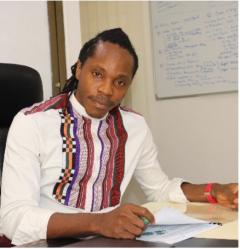This blog summarizes the research “Transforming education systems: Why, what, and how.”
Every single day, the challenges of global education become more daunting and more urgent. Just a few days ago on June 21, the United Nations reported that as many as 222 million school-aged children impacted by crisis require urgent educational support—this number is three times the estimates from 2016. Furthermore, as currently reported by the World Bank and UNICEF, the portion of 10-year-olds in low- and middle-income countries during the pandemic who could not read a simple story is estimated to have grown from about 50 percent to over 70 percent today. The poorest children and those living in remote regions have been hit the hardest. We are at a critical inflection point with hundreds of millions of children likely to miss out on a quality education in the very moment where we have to confront climate change, increasing conflict, and renewed pandemic risks. Alarm bells are being sounded and the United Nations secretary general has invited political leaders, policymakers, youth, and all stakeholders to join him at the Transforming Education Summit (TES) in New York in September 2022 to make commitments that will transform education.
We agree that something different and transformational needs to happen now. But what does transformation mean, anyway?
Here we share a condensed version of our perspective on how policymakers can better understand what it means and most importantly get started with making significant commitments for action. We don’t have the final answers, but we want to share the perspective of a global think tank that has studied the development of education systems over the past 100 years and a national government from a low-income country in the midst of an education transformation. You can read the full report here and the executive summary here.
What is education system transformation?
At its core, system transformation must entail a fresh review of the goals of our education systems. There must be a frank assessment—are the goals meeting the moment that we are in and are they owned broadly across society? If the answer is “no,” then transformation means repositioning all components of the education system to coherently contribute to a new, shared purpose.
We hope that countries and local stakeholders can use these insights to take the [education] transformation journey forward wherever they are.
We propose three steps centered on purpose, pedagogy, and position that embed a participatory, inclusive approach as the key to successful transformation.
Step 1: Start with purpose
Education leaders, families, teachers, and students can have very different expectations about the purpose of their education system. Without a broadly shared vision in and outside of the education system, any attempt at transformation will have a slim chance of success. When education leaders do take the time to have meaningful conversations with diverse stakeholders about the goals of education, it can help pave the way for a broadly shared vision. Such a shared vision has played a key role in successful reforms in Portugal, Finland, and Canada.
In Sierra Leone, the most recent education sector plan was developed after careful and thorough consultations with a wide group of stakeholders. In addition to the national and local government, partner countries and civil society organizations, the government has made a point of consulting previously excluded groups like the bike riders union, the market women’s associations, and traditional and religious leaders across the country. Given the deep inequality in students’ learning in Sierra Leone which was highlighted by all stakeholders, the education sector plan and strategy prioritize foundational learning not as an end goal but as the floor to give every child a chance for longer-term educational success. And the country now puts the children who are currently learning the least at the front of its efforts thanks to its Policy on Radical Inclusion in Schools.
Step 2: (Re)design the pedagogical core
The second step is to (re)design teaching and learning experiences to ensure students achieve the system’s stated goals. Unfortunately, redesigning education systems often results in limited results for children’s learning and development. We need to focus more on what students are expected to learn—not just how that content is delivered—and we need to pay special attention to those who are learning the least.
Some of the most promising results that take this approach to heart in recent years come from a practice called Teaching at the Right Level. Grouping children by ability level and conducting interactive learning activities for a period of time each day is at the core of this methodology. Real-time assessments provide data needed to move students on to higher level groups as they master skills. The approach is most effective for education systems that have large numbers of students failing to master literacy and numeracy by the end of primary school and where the default teaching approach is whole group instruction, even with very large class sizes.
In Sierra Leone, the country has joined the first cohort of World Bank Accelerator Program countries to explicitly change its pedagogical core to support foundational learning. In addition, the country has launched the Sierra Leone Education Innovation Challenge to generate key evidence on what can help improve learning outcomes. Several of the service providers are adopting Teaching at the Right Level to improve learning outcomes. Initial signs are positive for our learning outcomes, as even with COVID-19 disruptions, we do not have major learning losses even if no gains were made.
Step 3: Position and align system components
Next, the system must be positioned to support the pedagogical core across the following six components: (1) Curriculum, (2) Human resources, (3) Data and assessment, (4) Governance, (5) Funding, and (6) Engagement of “winners” and “losers” in the alignment process.
In Sierra Leone, the government has recently updated the preprimary, basic, senior secondary, civic, and technical and vocational education and training (TVET) curricula. In addition, the country has paid special attention to using data to support the realignment behind the updated pedagogical core while investing in teacher training at all levels.
Before 2018, Sierra Leone had little detailed information about who its education system served and who it left out. Data collection had used paper-based questionnaires, and, as a result, data were often lagging by up to a year and scattered across multiple government departments. Sierra Leone set about digitizing its annual school census and cut the data collection time to 10 weeks. By also carefully updating the questions asked, Sierra Leone shed light on who was left out of the system. Now the Annual School Census is both gender-disaggregated and asks about the disability status of the students and the accessibility of the classrooms. Moreover, the Ministry digitized and linked education data going all the way back to 2015. This gave the Ministry a data-driven starting point for addressing disparities within the education system, and it remains a crucial component supporting its goals of developing a more inclusive system, including for pregnant girls and children with disabilities.
What now?
We believe that there is much to learn from history and solutions currently being implemented around the world to help us. As Minister Sengeh’s Co-Chair of the TES Advisory Committee and the Deputy Secretary General Amina Mohamed recently said: “This is not ‘t’ for tweaking. This is ‘T’ for Transformation.” We hope that countries and local stakeholders can use these insights to take the transformation journey forward wherever they are—and for those that are further along on the path, please do share your experiences with us and the world. We look forward to adding your learnings and lessons to the collective effort to achieve Sustainable Development Goal 4—quality education for all.
The Brookings Institution is committed to quality, independence, and impact.
We are supported by a diverse array of funders. In line with our values and policies, each Brookings publication represents the sole views of its author(s).






Commentary
Why we must transform our education systems, now
June 23, 2022